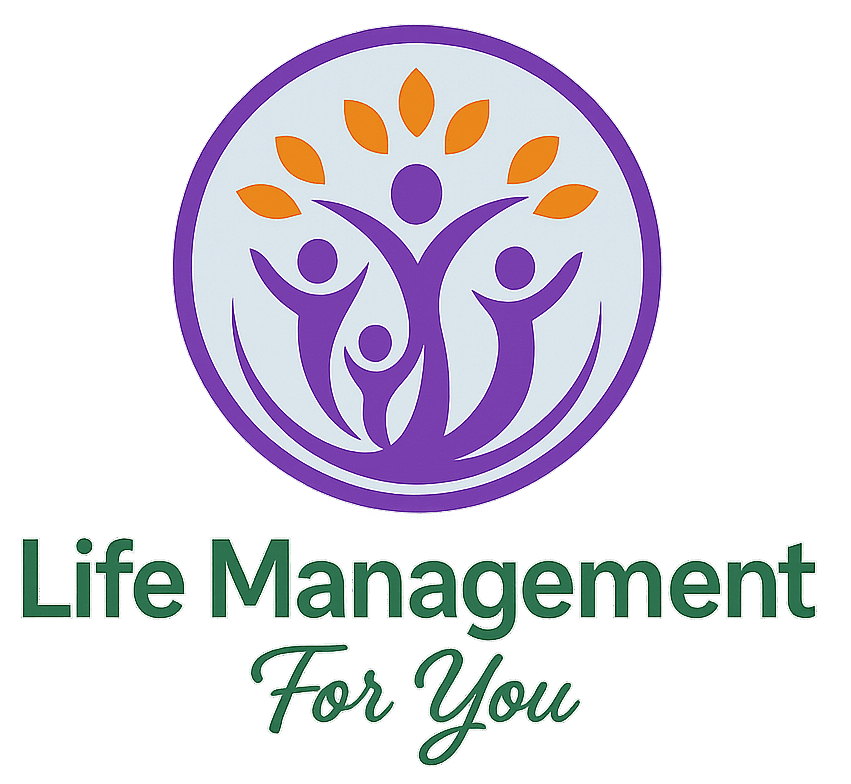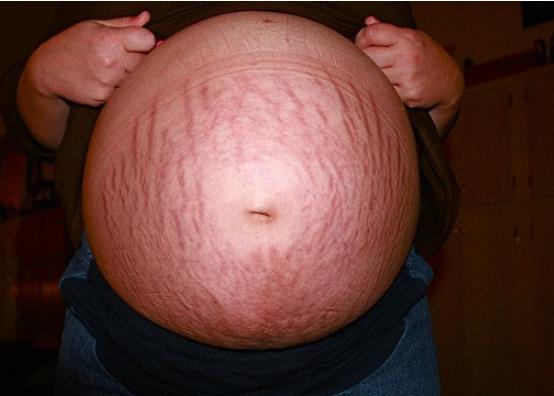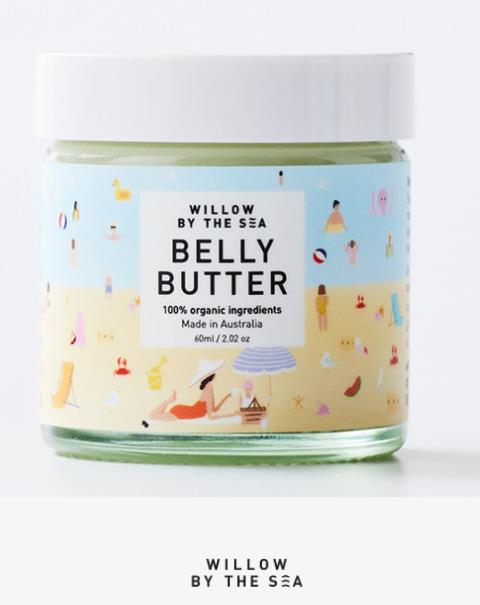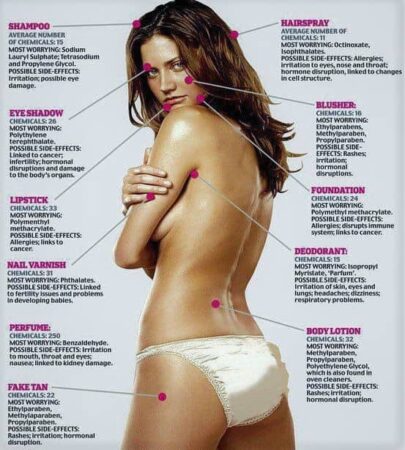Stretch marks are common during pregnancy. Learning how to treat stretch marks during pregnancy is beneficial knowing what to avoid while pregnant is vital.

Please Note:
Stretch marks are not harmful to your baby or yourself nor do they create any medical issues.
Stretch marks can appear in both males and females of all ages along with younger people during signs of Puberty.
One of the prominent reasons for stretch marks is overstretching the skin due to extra weight developed quickly.
As a result, the connective tissue beneath the skin stretches to the point it tears and creates those various colors seen during and after pregnancy.
Learning how to treat stretch marks at an earlier stage will benefit you greatly.
There are ingredients found within certain products that you need to avoid during pregnancy that can be harmful to your unborn.
Disclaimer
I am an affiliate for various programs, and as such should you purchase any products from the links that I provide, I may receive a small commission as a result of the sales at no cost to you.
What are Stretch Marks?
The skin consists of three main layers.
The outer layer (Epidermis), the middle layer (the Dermis), and the deeper layer (the Subcutaneous or Hypodermis)

Within the Dermis (the middle layer) is where Stretch Marks form.
Due to the sudden growth, the connective tissue stretches and becomes so thin it tears.
The tear creates an inflammatory reaction.
As a result, a change to the collagen fiber’s appearance gives pinkness or redness to the skin.
This tear, to some, may give the appearance to that of a scar forming.
Similar to scars, stretch marks are permanent although many do fade away to some extent they will always remain.
For others, this can take months to fade away or even years, depending on how or what treatment you are giving them.
Learning How to Treat Stretch Marks During Pregnancy is Important Knowing What to Avoid for the Safety and Health of Your Unborn is Vital. Share on XThere are certain forms of treatments that can help to make them less noticeable.
The longer they persist, the harder they are to treat.
The best time to help heal stretch marks is from the onset you know you are pregnant.
For many women dealing with pregnancy, stretch marks generally appear on the stomach, breasts, thighs, and buttocks.
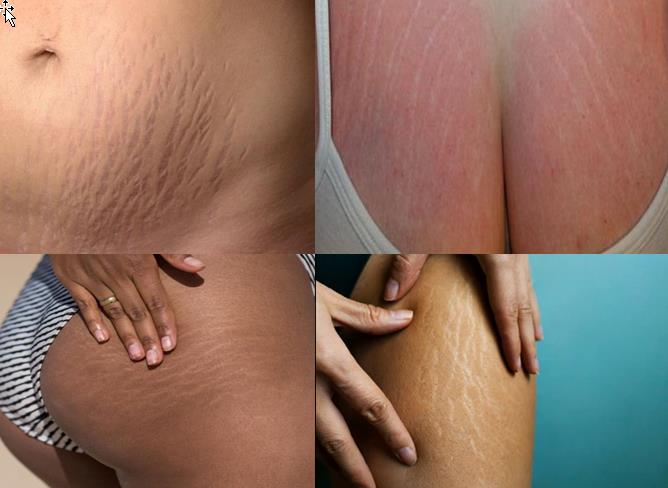
If not looked after during the early stages of pregnancy, more drastic measures might need to be taken.
Some of these are laser treatments and other medical interventions.
Also note, that even such treatments will never eliminate stretch marks.
It can only help lessen the appearance as much as possible.
Why are Stretch Marks Different Colors?
The colors of stretch marks vary from person to person, along with their skin color.
When the tear is new, the body is working its best to heal the damaged vessels that have been affected before they thin out too much.
For this reason, you will see fluctuations in colors that can range from pink to red which is the most common color many may face, and some can go to purple.
If you have lighter skin color, this is generally the one you will see.
Should you have a darker skin tone, you may see these colors going from purple to brown, even black during the earlier stages.
Although the body is trying to heal and repair the damaged layers, collagen production struggles to restore this damage. Therefore, the longer it is there it is harder to maintain balance.
Itchiness
Along the way, you may start to feel your skin is itchy around these areas.
There is also some itchiness at the beginning during the formation of stretch marks.
The itchiness is only temporary and not permanent.
Early treatment can help alleviate quicker as you start the hydration and nourishment to your skin.
Stretch marks will never fully heal or disappear, but the longer they are left unmaintained you will find the harder it is to treat.
Many women may feel the need for medical intervention such as laser or other forms of cosmetic surgery.
Such procedures can be costly and may require many treatments.
They will not make stretch marks disappear as all these methods can only help lighten them as much as possible.
The best way to treat stretch marks is to treat them at their early stages, preferably when you find you are pregnant.
In doing so, treatments will help moisture and hydrate the affected areas.
The healing process can become quicker rather than facing long-term unsightly scars later.
They will fade over time but treating them now may help to lesson having those silvery or white scar-like lines over your body.
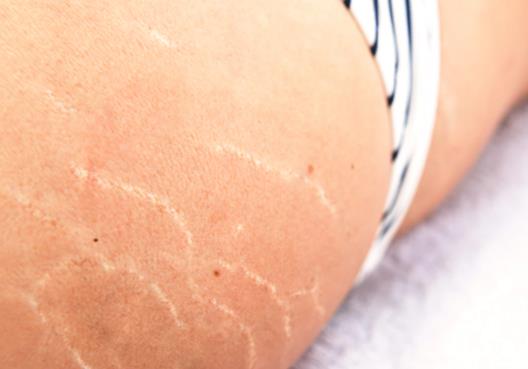
When do Stretch Marks Form During Pregnancy?
Most stretch marks usually appear during the third trimester, while some may see them during the second trimester.
Some females don’t get any stretch marks at all.
If you are wondering as a first-time Mum if you will get stretch marks, although there is no guarantee, one concept that seems to apply is genetics.
When the mother has had stretch marks, you may follow suit.
What to Avoid During Pregnancy
Certain anti-stretch marks creams may be great to use after pregnancy.
Unfortunately, certain compounds, found within some skincare products should be avoided at all costs during pregnancy.
As a standard and safety rule, the FDA advises these skincare ingredients are not recommended during pregnancy.
The reason for this is simple; they can be harmful to your unborn child.
When looking for any skincare product you may want to use on your body during pregnancy, always check the product’s ingredients to make sure that the following compounds are not included within the product.
Retinoids or Retinols:
These are derivatives of Vitamin A, which have been shown to interfere with fetal development. This can lead to various birth defects and should be avoided at all costs.
Tazorac & Accutane:
These are derivatives of vitamin A, which are known to cause birth defects during pregnancy, these should also be avoided.
Salicylic acid
In high doses, they have been shown to cause pregnancy complications and are harmful to the newborn’s development.
Hydroquinone
Hydroquinone, is used as a skin-lightening agent, although there are no major studies of its use with pregnancy, the FDA has put this in its Category C section and recommended to avoid during pregnancy.
Below is a video from Dr. Gam Lee Ping who shares further details on some of the harmful effects on your unborn.
Tips to Help Reduce Stretch Marks From Forming
Avoid smoking
- Smoking reduces the oxygen supply to the body in general now imagine what this is doing to the baby.
- Smoking while pregnant has been linked to many health issues such as:
- Premature birth
- Low birth weight
- Pregnancy loss
- Birth-defects
- May create asthma in the child when born
- SIDS (sudden infant death syndrome)
- When mentioning smoking, this also includes the newest trend in vaping which can be worse than general cigarettes.
- E-cigarettes contain nicotine which easily permanently damages the developing brain function of your baby.
Wear sunscreen, but avoid direct sunlight
The UV Rays produced from the Sun damage the skin’s collagen and elastin.
As a result, this can make matters worse and help stretch marks to form more.
Best to stay in the shade and wear UV-Protecting lotion along with protective clothing.
Don’t spend too much time in the Sun, and always reapply your sunscreen at least every 2 hours.
Control your weight gain.
Yes, we know there is weight gain due to the pregnancy itself.
Eating a healthy diet and exercising will help manage any added weight that may occur, as this can help reduce the possibility of further stretch marks.
The American College of Obstetricians and Gynaecologists suggests 25-35 pounds or 11 to 15 kilos if you are already overweight, for those who are underweight should gain up to 40 lbs or 18 kilos.
Should you notice any sudden weight loss or gain, always see your doctor to help find the underlying cause of the issue.
Hydration is Key.
Drinking enough water helps to keep your skin hydrated and supple.
When the skin is soft, it is well-hydrated and generally doesn’t create stretch marks as readily as dry skin would.
Drinking coffee may increase your chances of developing stretch marks as it dries your skin.
So best to avoid coffee and go for herbal teas instead.
Nutritious diet
Boosting skin health is beneficial by eating certain foods that contain Vitamin C, vitamin D, vitamin E, zinc, and protein.
Magnesium is also vital for the healthy production of vitamins C and D
Choose unprocessed foods like whole-wheat toast, mixed berries, and colorful veggies packed in nutrients.
Best Organic Oils and Creams to Use During and After Pregnancy.
As mentioned earlier, for the safety and health of your unborn child, some compounds need to be avoided during pregnancy.
Below are some top organic products that are safe to use during and after pregnancy.
Remember, the moment you receive the news you are expecting, it is always best to start the hydration process as soon as possible.
Doing so will help reduce or lessen any possible stretch marks from occurring.
The more supple and hydrating the skin is, the less chance you may have of producing stretch marks
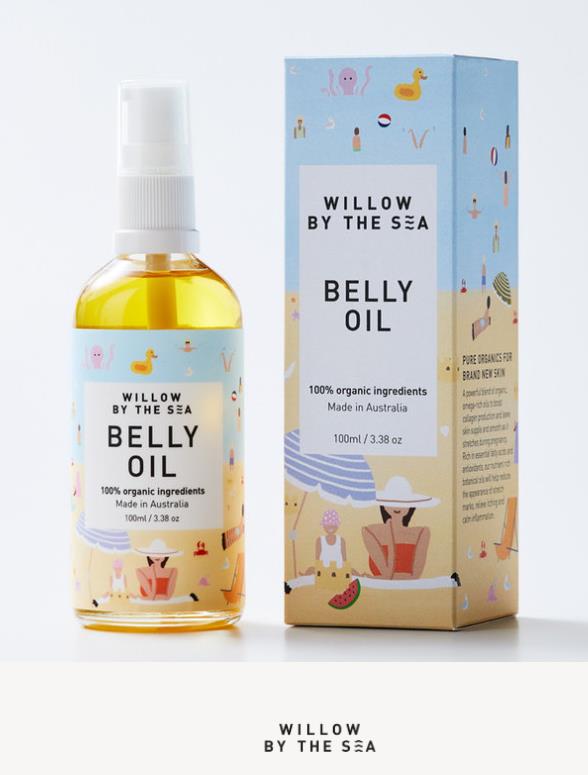

Helps to soothe dry itchy skin and helps to prevent the appearance of stretch marks, scars, and cellulite by firming the skin and increasing elasticity.
Don’t Forget the Nipples.
We all know the importance of breastfeeding for your newborn and how breast milk can help to keep your baby healthy and protected.
Breastmilk helps protect against many allergies, and infections and supplies all the necessary nutrients your baby needs from you
Only a mother’s milk can provide all the proper protection your newborn needs.
There are moments for some mothers, and you may become one of them, is that many times the nipples may be cracked or too tender to breastfeed.
When that is the case, you need to rely on formulated milk.
Although formulated milk powder has some benefits, it doesn’t give the same protection as giving your milk directly to your little bundle of joy.
Having cracked or bleeding nipples can become one of the drawbacks for some women during breastfeeding time.
Protecting and nourishing your nipples will help to soothe the area, and applying between feeds gives you that added relief from any tenderness or cracked nipple.
Weleda Nipple Balm is great to help soothe your delicate area and are best to use just before birth to strengthen your nipples ahead of that first special moment when they are born.
All the necessary organic contents are there within these creams and oils to help tone and condition the nipple in preparation for your special bonding with your newborn.

Takeaway
For many women dealing with pregnancy, stretch marks generally appear on the stomach, breasts, thighs, and buttocks.
Although stretch marks once formed are permanent, various treatments can make them less visible as they lessen in color and appearance.
For many, they will fade but also depends on how much the skin has stretched along the way.
Taking care of your skin and body is always important, not just for your health but for your baby.
Taking care of the foods you eat becomes very beneficial again to you and your baby’s health.
Keeping your skin hydrated can lessen the appearance of stretch marks.
Avoiding those dangerous compounds can provide added security in knowing your baby’s development is being looked after.
Then you have the safety in using organic treatments for your stretch marks along with a bonus preparing yourself for your first of many bonding sessions with your baby when breastfeeding.
Learning How to Treat Stretch Marks during Pregnancy is Important. Knowing What to Avoid for the Safety and Health of your Unborn is Vital.
By taking care of yourself, you are taking care of your baby for many happy years ahead.
I wish you the very best and congratulate you on becoming a mother, regardless of whether this will be your first or a few more along the way.
You deserve the love, and so does your baby.
I wish you many happy days and years ahead.
Have you questions to ask?
If so, please feel free to place a comment in the comments section below, and I will respond to you directly ASAP.

